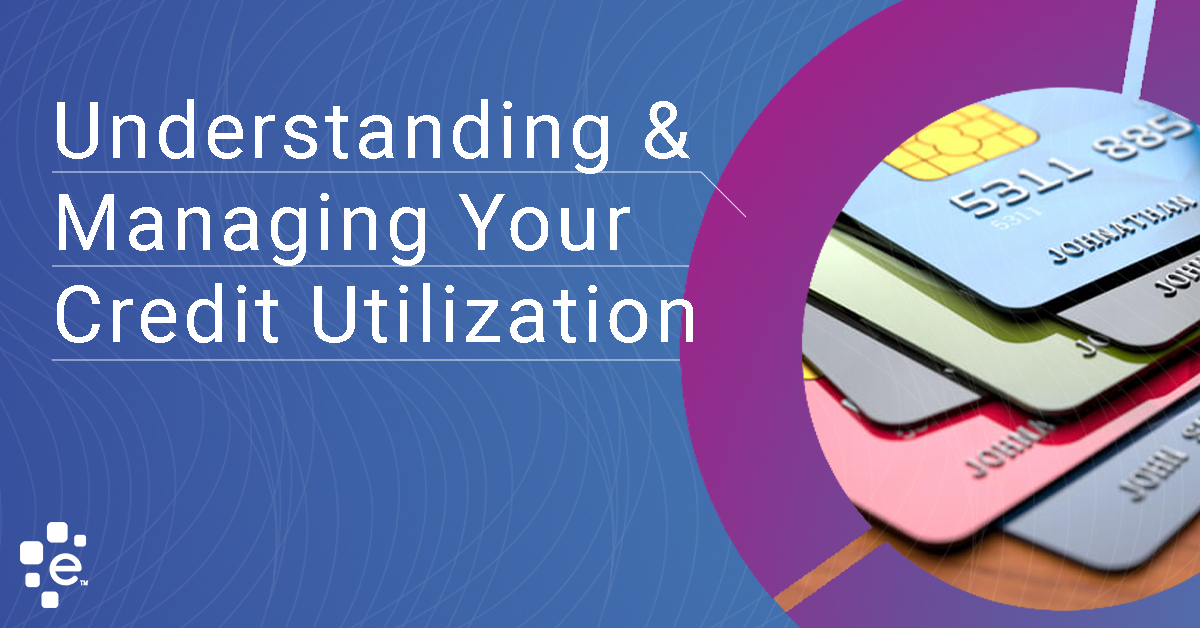As financial uncertainty persists, you may find yourself turning to your credit cards to get through this challenging time. While credit cards can be a valuable financial tool when used wisely, they can also be a source of financial stress if you find yourself charging more than you’re able to pay back. Not managing your debt well can also affect your credit utilization, a term you’ve probably heard of but may not know much about.
Simply put, credit utilization measures the amount of available credit you’re using on your credit cards. It’s a ratio of your outstanding balance to your overall credit limit. So, what does it mean for your credit score? Let’s unpack some myths and facts that may help you understand the importance of credit utilization, as well as ways to calculate and manage your utilization.
Myths vs. Facts
Myth: Credit utilization has no impact on your credit score if you pay your bills on time.
Fact: In FICO’s most commonly used credit-scoring model, debt and credit utilization account for 30% of your overall score, second only to your payment history. This means the closer you are to your credit card limit, the lower your credit score might be. Aim to keep your utilization per credit card as low as possible to safeguard your score. As your utilization ratio approaches 30 percent of your limits, your scores will begin to decrease much more rapidly. People with the best scores generally have utilization of less than 10 percent, and you never want it to exceed 30%.
Myth: If you max out a credit card, you should take out a new card to free up your overall credit limit and improve your utilization ratio.
Fact: There are two types of credit utilization measurement: per-card and overall. Per-card utilization looks at your ratio of debt to credit limit on an individual card basis. Overall utilization takes your total utilization across all cards into account. Credit scoring models take both per-card and overall utilization into account, so having just one maxed out card could hurt your credit score.
Opening a new account also introduces several aspects that may actually increase your risk. There is a new inquiry. A brand new account has been added to your credit report that you haven’t started to pay on, yet. And because scores require three to six months of activity before being included in score calculations, it’s not helping your scores. In fact, the risk associated with opening a new account may outweigh any potential benefit of reducing your utilization rate.
Myth: Once you pay off a credit card, your credit score will improve.
Fact: While your credit score could see improvements if you pay off a credit card, the impact may not be immediate. Your lender reports your account status about once a month, so it could be several weeks before your report is updated. Scores calculated after your report is updated will reflect the paid off amount. Depending on when you made a payment, it could take a full billing cycle before your credit report is updated and your credit score reflects those changes.
Now that we’ve established the basics of credit utilization and how it can impact your score, consider how to keep it in check.
Calculate your utilization
The first step to getting your utilization rate in a good place is to determine your current utilization percentage. You can calculate your utilization rate by:
- Adding up the total balances on all credit cards
- Adding up the total credit limit across credit cards
- Dividing the total balance (from step 1) by the total credit limit (from step 2)
- Multiplying this number by 100 to see your credit utilization ratio as an easy-to-read percentage
Manage your utilization
Thirty percent utilization is not a goal or target. This is a common misconception about credit utilization. Thirty percent is a number you should strive to stay as far below as possible. It represents a mathematical limit at which your scores will begin to plummet. The lower your utilization rate, the better. Paying your balance in full is ideal, but that’s not always practical. As a general rule of thumb, aim to keep your utilization as low as possible to minimize its impact on your credit score.
If you’re wondering how to lower your credit utilization ratio, consider the following strategies:
- Make multiple payments throughout the month. Instead of allowing the balance to accumulate, pay down your debt in increments throughout the month to ensure the amount on your billing statement doesn’t close in on your limit.
- Time your payments, and make sure you pay in full each month. Time your payments ahead of your statement closing date, so your most up-to-date credit utilization information is calculated into your score. It’s ideal to pay the balance due in full. If you can’t pay it in full, pay as much as you can to keep your utilization as low as possible.
- Keeping open credit accounts. Even if you don’t intend to use them much, closing accounts with zero balances can lower your overall credit utilization. You need to make a small purchase from time to time to show activity in the account, though. Accounts with no activity reported will be excluded from scores after a period of time. If you don’t use the card, it could still be on your credit report but not be helping your credit scores.
If you’re concerned about making payments on time, connect with your lender to determine the best path forward. Check out my recent post on deferment and forbearance relief options for more information.
